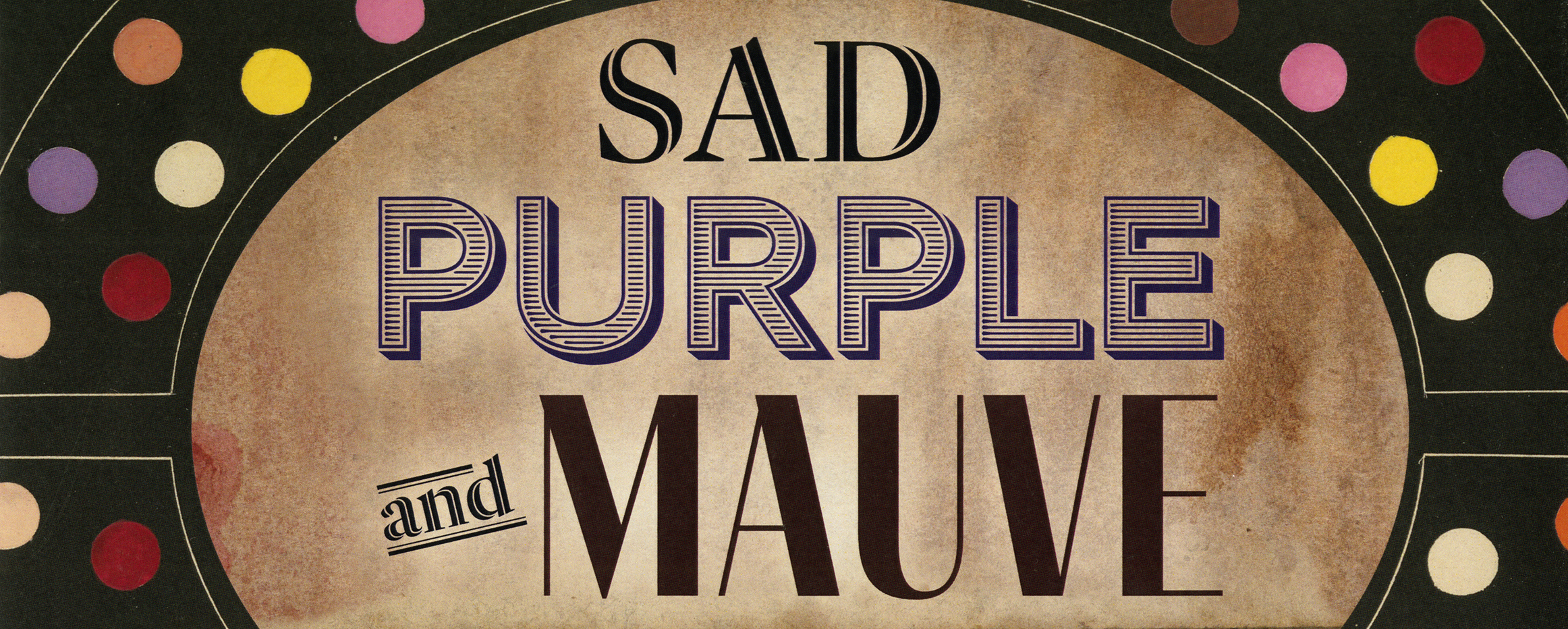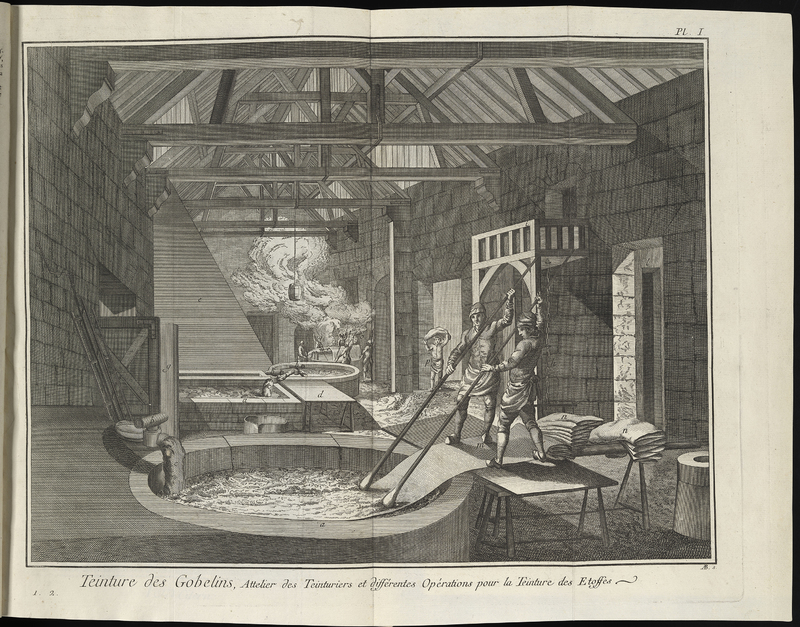Royal Dye Workshop
THE ROYAL DYES WORKSHOP IN ENLIGHTENMENT FRANCE
This illustration from the famous Encyclopedia of Diderot and D’Alembert is one of fourteen images that accompany a substantial entry about the dyeworks of the Gobelins tapestry factory. By the time this image was made, Gobelins had been supplying Paris with luxury weavings for centuries. It had become property of the French monarchy in 1662.
The Encyclopedia ignores the aristocratic connotations of Gobelins and instead focuses on the ingenuity of its workshops. This image documents hoses, faucets, and pumps (powered by horses on the floor below) with which dye vats were filled and rinsed with water drawn from the Bièvre: a small Parisian river once used by dyers and tanners that has since been paved over. Although such dye shops were hot, smelly, and full of caustic materials, the image depicts a rather enjoyable workplace; in the foreground, robust and classically proportioned workers blithely work in unison and seem undaunted by loads of fabric piling up behind them.
— Written by Sarah K. Rich (Art History, Center for Virtual/Material Studies)
Robert Bénard
Teinture de Gobelins: Attelier des Teinturiers et Differentes Opérations pour la Teinture des Etoffes
[Dyeing at Gobelins: Dyers’ Workshop and Different Processes for Dyeing Fabric ]
Engraving for Encyclopédie ou Dictionnaire Raisonné des Sciences, des Arts et des Métiers, 17 vols.
Edited by Dennis Diderot and Jean le Rond D’Alembert
Paris A'Livourne, 1751-1765

